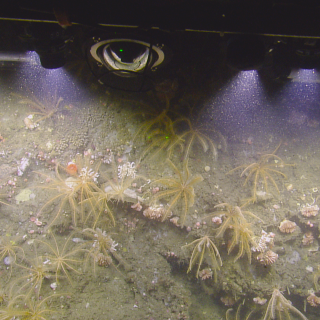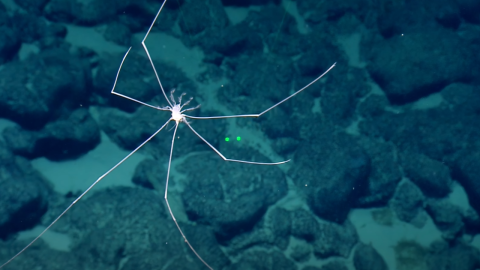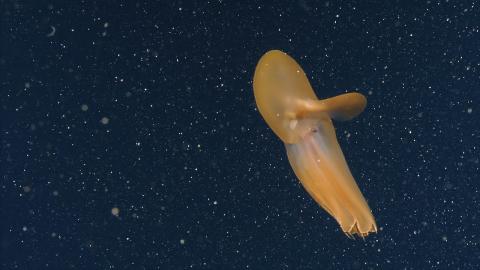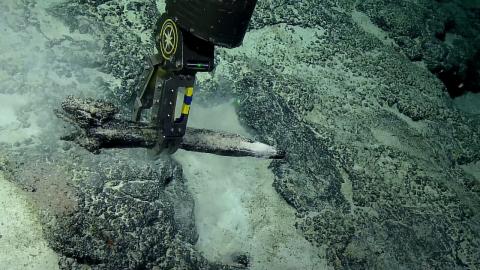Exploring the Microbial Mats of Quinault Canyon
Ethereal methane seeps and microbial mats lend to a seemingly unearthly seascape in Quinault Canyon, located within the Olympic Coast National Marine Sanctuary off the coast of Washington State. Over the course of several days, E/V Nautilus researchers explored and sampled this biologically diverse and ecologically rich region where life is characterized by methane seeps, areas in the rock bed where the gas seeps out into the surrounding waters.
Methane seeps form unique habitats driven by complex systems that provide resources to animals living in this seemingly inhospitable seafloor. While diving here, we visually captured bubbles emanating from the seafloor and collected sediment and microbial communities using a scoop, slurp, and push core sampling techniques.
Bright, white clam shells reflecting the lights from ROV Hercules revealed a treasure trove of organisms that rely on these methane seeps for life sustenance. Here, aggregations of clams and tubeworms are fueled by the release of methane from the seafloor.
It’s not just invertebrates that call these depths home. Layers of microbial mats, deep-sea carpets of microorganisms like bacteria and archaea, feed off of the chemicals produced by methane seeps to create oxygen in a process known as chemosynthesis. While diving in Quinault Canyon, we came across a “peachy” microbial mat whose orange-hued coloration is theorized to mean that bacteria contain a heavier concentration of hydrocarbon.

Olympic Coast NMS & Gradients of Blue Economic Seep Resources
The Olympic Coast National Marine Sanctuary is a biologically diverse and ecolog



